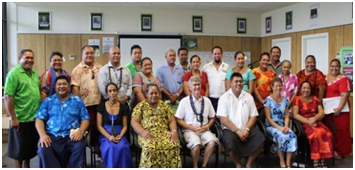
The project commenced with Paul holding a training programme in February 2014 in which 14 MESC staff and four teachers were given detailed training in how to use the Steps programme, including both software and worksheets. Participants also received background information about dyslexia. They were split into three groups with each group receiving three days of training. The participants were extremely impressed with the multisensory aspects of the programme, how rewarding it is to use and how well all the software activities and the worksheets fit together to provide a complete language learning package.
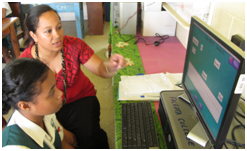
Tutoring in the schools began in April with each teacher tutoring 3 - 4 students for 2 - 4 sessions per week. Each session lasts 40 - 60 minutes. The primary - intermediate school students are from Year 7 and meet immediately after school and the high school students are from Year 9 and meet in a free period during the day. Students were chosen for the programme from their results on the Year 6 and 8 end of year national exams.
The Learning Staircase decided to support the project and English literacy and language teaching in general and is providing, on a continuing basis, free use of the Steps software for all schools and learning institutes in Samoa. The sixteen computers, four for each pilot school, were provided by the Auckland Unitarian Church.
Although many of the Year 7 students had never used a computer before they had no trouble picking up the skills to use the Steps software, thoroughly enjoying all the activities and the built in reward system. They were also very proud to be in the privileged position of learning valuable keyboard skills and to be ahead of their classmates for once instead of lagging behind.
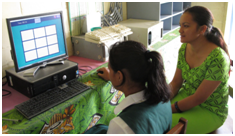
Progress has been monitored using Fry’s high frequency words and the New Zealand PROBE assessment system (Triune Initiatives Ltd). All students participating in the programme over the period monitored showed significant improvement in reading fluency. One high school student progressed from many years behind to a reading fluency of her chronological age and was overjoyed with her advancement. The year 7 students from the two primary - intermediate schools were very proud of themselves for finally being able to read stories. Reading comprehension has not improved at the same rapid rate and will require some special attention.
Parents were extremely pleased with their child’s progress and extremely grateful, sometimes emotionally so, for the extra assistance their child was receiving. For example, one parent was almost in tears of gratitude over the extra help her daughter was being given.
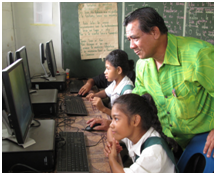
Obviously the earlier learning difficulties are addressed the more effectively they can be remedied.
It also makes sense to support the national language by having Samoan remedial resources. It was therefore decided to develop Samoan Steps resources and The Learning Staircase again agreed to provide support by placing Samoan content developed by MESC onto the Steps software. A Memorandum of Understanding was drawn up and signed by both parties. It was also agreed that Samoan language learners in other countries, primarily New Zealand, could use the Samoan Steps materials. This is a ground breaking initiative and has the potential to address reading problems of Samoan children at an early age and on a national scale.
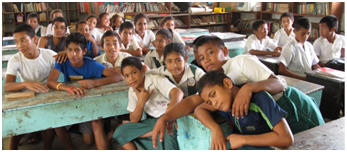
The project is continuing in the four pilot schools and hopefully it will be expanded to additional schools. Also, there are plans to use Steps more widely within each school. It is hoped a national coordinator can be obtained as well as additional computers for schools coming onto the project. With a national coordinator, more computers and Samoan content in the Steps programme it is hoped the project can eventually expand to encompass all schools in Samoa and a larger number of students within each school.